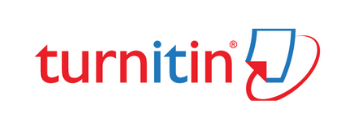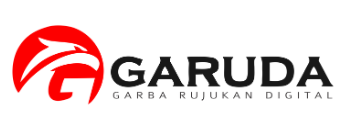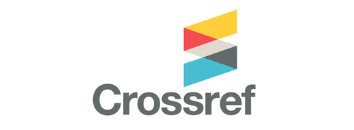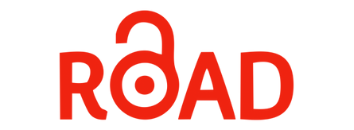The Effect of Perceived Ads Personalization Toward Online Impulse Buying Tendency with Mediating and Moderating Variables, Evidence from Indonesian Millennial E-Commerce Customers
DOI:
https://doi.org/10.24002/kinerja.v25i1.4357Abstract
E-commerce business grows over time and has changed retail business behavior all over the world. To expand, e-commerce uses ads personalization to study customer needs and track customer behavior. This study aims to analyze the effect of perceived ads personalization towards online impulse buying tendency. The research model hypothesized the effect of perceived ads personalization towards online impulse buying tendency. The mediating variables in this study are perceived novelty, privacy concerns, advertising value, perceived relevance, creepiness, affective reactance, and attitudes towards ads. The study also used a moderating variable of purchasing frequency to distinguish how effective personalized advertising is in groups that are classified as high and the low-frequency buyer on e-commerce. This study using quantitative research methods with PLS-SEM data analysis. Respondents were taken by purposive sampling on millennial social media users in Jabodetabek. The results showed that perceived advertising personalization had a positive effect on perceived novelty, privacy concern, advertising value, perceived relevance, and creepiness. Furthermore, this study found perceived novelty, advertising value, and perceived relevance have a positive effect on attitudes towards ads. Creepiness indicates a positive effect on affective reactance, while privacy concern and affective reactance have a negative effect on attitudes towards ads. One of the findings is that attitudes towards ads had a positive impact on online impulsive buying tendency. The frequency of purchase is proven to be a moderator that weakens the influence of attitudes towards ads to online impulse buying tendency.
Keywords: perceived ads personalization, perceived novelty, privacy concern, advertising value, perceived relevance, creepiness, affective reactance, attitudes toward ads, online impulse buying tendency, e-commerce
References
APJII., 2020. Laporan Survey: Penetrasi & Profil Perilaku Pengguna Internet Indonesia. Jakarta: APJII.
Aydin, G., 2016. Role of Personalization in Shaping Attitudes Towards Social Media Ads. International Journal of E-Business Research. 14(3). pp. 54-76. https://doi.org/10.4018/IJEBR.2018070104
Baek, T.,H. & Morimoto, M., 2012. Stay away from me. Journal of advertising, 41(1). pp. 59–76.
Barnard, L., 2014. The Cost of Creepiness: How Online Behavioral Advertising Affects Consumer Purchase Intention. Ph.D. Dissertation. The University of North Carolina at Chapel Hill. https://doi.org/10.17615/7fmw-1r29.
Bleier, A. & Eisenbeiss, M., 2015. The Importance of Trust for Personalized Online Advertising. Journal of Retailing, 91(3). pp. 390-409. https://doi.org/10.1016/j.jretai.2015.04.001.
BPS., 2019. Statistik E-Commerce 2019.
Brehm, S. S., & Brehm, J. W., 1981. Psychological Reactance: A Theory of Freedom and Control. New York: Academic Press.
Castaneda, J., Munozleiva, F. & Luque, T., 2007. Web acceptance model (WAM): Moderating effects of user experience. Information & Management. pp. 44 (4), 384-396. https://doi.org/10.1016/j.im.2007.02.003.
Chin, W.W., 2009. How to Write Up and Report PLS Analyses. Handbook of Partial Least Squares. pp. 650-690. DOI: 10.1007/978-3-540-32827-8 29.
Dodoo, N.A. & Wu, L., 2019. Exploring The Anteceding Impact Of Personalised Social Media Advertising On Online Impulse Buying Tendency. International Journal Internet Marketing and Advertising, 13(1). pp. 73-95. DOI: 10.1504/IJIMA.2019.10019167.
Ducoffe, R. H., 1996. Advertising Value and Advertising on the Web. Journal of Advertising Research, 36(5). pp. 21-36.
Fachryto, T., & Achyar A., 2018. Effect of Online Behavioral Advertising Implementation on Attitude toward Ad and Purchase Intention in Indonesian E-Marketplace. Sriwijaya International Journal of Dynamic Economics and Business, 2(2). pp. 123-138. https://doi.org/10.29259/sijdeb.v2i2.123-138.
Gerdman, T. & Nordqvist F., 2017. An Exploratory study on Perceptions of Personalised Display Ads Online. Jönköping: Jönköping University.
Gronholdt, L., Martensen, A., & Kristensen, K., (2010). The relationship between customer satisfaction and loyalty: Cross-industry differences. Total Quality Management, 11(4-6). pp. 509-514. http://dx.doi.org/10.1080/09544120050007823.
Hair, J., F., Hult, G., T., M., Ringle, C., M., & Sarstedt, M., 2014. A Primer on Partial Least Squares Structural Equation
Modeling (PLS-SEM). European Business Review,26(2). pp. 106-121. https://doi.org/10.1108/EBR-10-2013-0128.
Hair Jr, J. F., Hult, G. T. M., Ringle, C., & Sarstedt, M., 2016. A primer on partial least squares structural equation modeling (PLS-SEM). Sage publications.
Hair, J.F., Risher, J.J., Sarstedt, M. & Ringle, C.M., (2019).When to use and how to report the results of PLS-SEM. European Business Review, 31(1). pp. 2-24. https://doi.org/10.1108/EBR-11-2018-0203.
Henseler, J., Ringle, C. M., & Sarstedt, M., 2015. A New Criterion For Assessing Discriminant Validity In Variance-Based Structural Equation Modeling. Journal of the Academy of Marketing Science, 43. pp. 115-135. DOI: 10.1007/s11747-014-0403-8.
Kalyanaraman, S., & Sundar, S. S., 2006. The Psychological Appeal of Personalized Content in Web Portals: Does Customization Affect Attitudes and Behavior? Journal of Communication, 56(1). pp. 110–132. https://doi.org/10.1111/j.1460-2466.2006.00006.x.
Kim, Y. J., & Han, J. Y. 2014., Why Smartphone Advertising Attracts Customers: A Model Of Web Advertising, Flow, And Personalization. Comput Human Behavior.33. pp. 256–69. doi: 10.1016/j.chb.2014.01.015
Kim, B. H., & Yu, J., 2015. The Importance of Trust for Personalized Online Advertising. Creativity Research Journal, 27(2). pp. 133-138. DOI: 10.1080/10400419.2015.1030302.
Kim, H., & J. Huh., 2017. Perceived Relevance and Privacy Concern Regarding Online Behavioral Advertising (OBA) and Their Role in Consumer Responses. Journal of Current Issues & Research in Advertising, 38(1). pp. 92-105. https://doi.org/10.1080/10641734.2016.1233157.
Liang, T.-P., & Huang, J. S., 1998. An empirical study on consumer acceptance of products in electronic markets: a transaction cost model. Decision Support Systems, 24, pp. 29–43. PII: S0167- 9236 98 00061-X.
Limpf, N., & Voorveld, H. A. M., 2015. Mobile Location-Based Advertising: How Information Privacy Concerns Influence Consumers’ Attitude and Acceptance. Journal of Interactive Advertising, 15(2). pp. 111–123. doi:10.1080/15252019.2015.1064795
Mahatmavidya, P. A., & Yasa, N. N. K., 2020. Advertising Value of Instagram Stories and The Effect on Millennial’s Attitude. Russian Journal of Agricultural and Socio-Economic Sciences, 3(99). pp. 29-39. DOI: 10.18551/rjoas.2020-03.04.
Nitzl, C., Roldan, J.L. & Cepeda, G., 2016. Mediation Analysis In Partial Least Squares Path Modeling: Helping Researchers Discuss More Sophisticated Models. Industrial Management & Data Systems, 116(9). pp. 1849-1864. https://doi.org/10.1108/IMDS-07-2015-0302.
Phelps, J., D'souza, G., & Nowak, G., 2001. Antecedents and consequences of consumer privacy concerns: An empirical investigation. Journal of Interactive Marketing, 15. pp. 2-17. https://doi.org/10.1002/dir.1019.
Piersen, J. & Heyman, B., 2011. Social Media and Cookies: Challenges for Online Privacy. Emerald Group Publishing Limited, 13(6). pp. 30-42. http://dx.doi.org/10.1108/14636691111174243.
Sekaran, U., & Bougie, R., 2016. Research Methods for Business: A Skill-Building Approach, 7th edition. New York: John Willey and Sons Ltd.
Shim, S., Eastlick, M. A., Lotz, S. L., & Warrington, P., 2001. An online prepurchase intentions model. Journal of Retailing, 77(3). pp. 397–416. DOI:10.1016/s0022-4359(01)00051-3.
Triandis, H. C., 1977. Interpersonal Behavior. Pacific Grove: Brooks/Cole Publishing Company.
Tsang, M. M., Ho, S. C., & Liang, T. P., 2004. Consumer Attitude Toward Mobile Advertising: An Empirical Study. International Journal of Electronic Commerce, 8(3). pp. 65- 78. https://doi.org/10.1080/10864415.2004.11044301.
Verhagen, T., & van Dolen, W., 2011. The influence of online store beliefs on consumer online impulse buying: A model and empirical application. Information & Management, 48(8). pp. 320–327. https://doi.org/10.1016/j.im.2011.08.001.
Verplanken, B., & Herabadi, A., 2011. Individual Differences İn İmpulse Buying Tendency: Feeling And No Thinking. European Journal Of Personality, 15. pp. 71-83. https://doi.org/10.1002/per.423.














